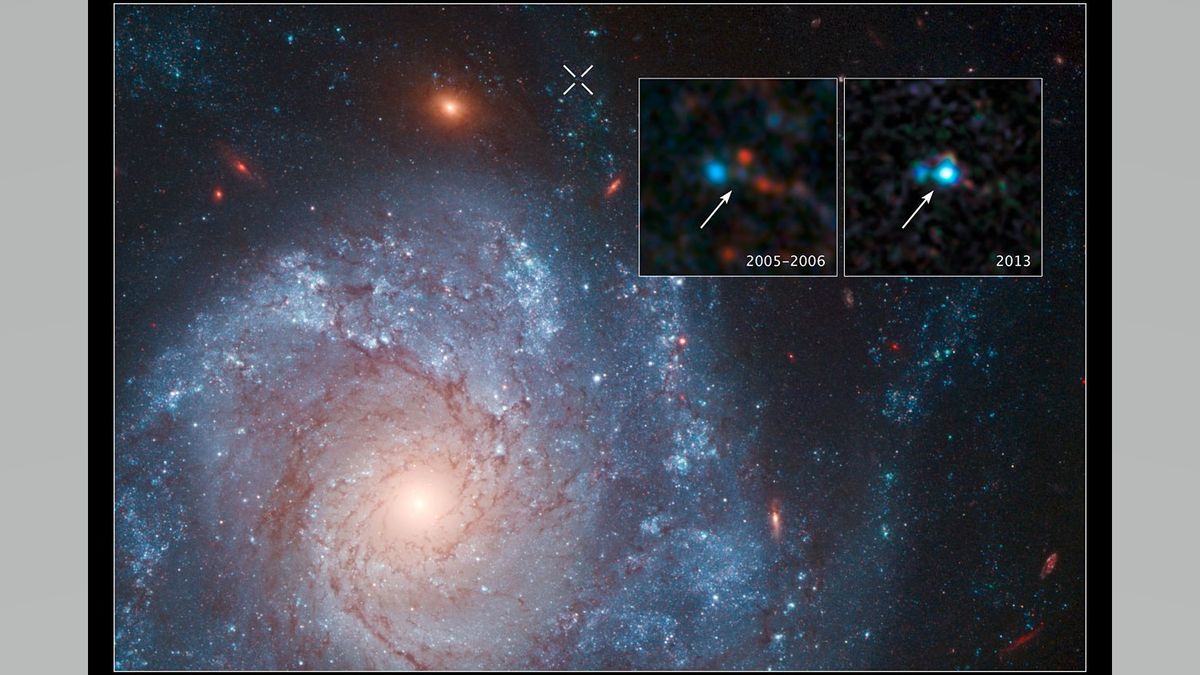
Astronomers have spotted a white dwarf that miraculously survived its own thermonuclear detonation, raising questions over how and why these stars create supernovas.
A white dwarf is the evolutionary endpoint of a sun-like star.
This material flows onto the white dwarf, and once enough material has built up, it explodes in a thermonuclear detonation that usually destroys the star in what scientists call a Type Ia supernovas.
In 2012, when astronomers saw a supernova dubbed 2012Z explode in the face-on spiral galaxy NGC 1309, which is about 120 million light-years away from Earth in the constellation Eridanus, the Hubble Space Telescope was quickly on the scene.
Hubble had imaged NGC 1309 many times in the years prior to the supernova, and astronomers were able to identify the progenitor star system that exploded, finding that it contained a white dwarf snatching material off an aged, helium-rich star, perhaps a red giant. .
These observations marked the first time that scientists had ever imaged the progenitor of a Type Ia supernova.
Astronomers have identified what they suspect are failed Type Ia supernovas that leave behind remnant 'zombie' stars — a phenomenon termed Type Iax supernovas!
However, SN 2012Z is the first time that astronomers have confirmed that the exploding star survived, based on the images taken both before and after the supernova.
The researchers suggest that the thermonuclear explosion was not powerful enough to blow the white dwarf completely apart, and that much of the debris fell back onto the star, puffing the white dwarf up as it became what astronomers call a 'bound remnant.' Over time, the scientists expect the star to return to its original quiescent state.
The surviving white dwarf might be shining brighter than before because of light from a number of sources, including the glowing bound remnant itself, the shock-heated companion star that received the brunt of the explosive blast, and the radioactive decay of material that did escape into space during the explosion.
Usually, the light of a Type Ia supernova is powered by the radioactive decay of cobalt-56 and -57 isotopes in the material blown out into space.
— Hubble telescope captures cosmic remains of unusual white dwarf supernova .
Type Ia supernovas have a standardizable change in their brightness over time — what astronomers call a light curve — that makes determining their distance that much easier.